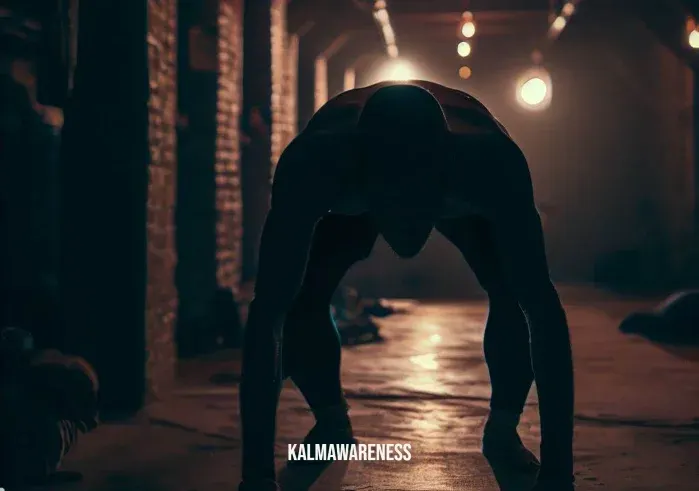Yoga Pose:Exploring the Low Squat Pose
Welcome to the world of yoga, where we delve into the art of finding balance, strength, and flexibility. In this article, we will journey into the wonderful realm of yoga poses, and our focus will be on the captivating “Low Squat Yoga Pose.” Get ready to embrace the power of this pose as we guide you through its description, benefits, and step-by-step execution.
Low Squat Yoga Pose Details
| Description | Explanation |
|---|---|
| Pose Name | Low Squat Pose |
| Original Name | Malasana |
| Difficulty Level | Intermediate |
| Pose Category | Hip Opener |
| Exercise Duration | 30-60 seconds |
What Awaits in the Next Part?
Before we embark on the enriching journey of practicing the Low Squat Yoga Pose, let’s understand the significance of this pose and its association with the Yoga cluster.
In the next part of the article, we will explore the numerous benefits this pose has to offer to both body and mind. We will also uncover the LSI keywords related to the Low Squat Yoga Pose, further enhancing our understanding of this remarkable asana. So, let’s not wait any longer and dive right into the magnificence of this yoga pose.
The Essence of the Low Squat Yoga Pose
The Low Squat Pose, or Malasana in traditional Sanskrit, is a grounding and transformative asana that finds its roots in the ancient practice of yoga. It is a hip-opening pose that demands both strength and flexibility. When performed mindfully, the Low Squat Pose can become a powerful tool for inner exploration and self-discovery.
Benefits of Low Squat Yoga Pose
- Stretches and Strengthens: The pose primarily targets the hips, groin, and lower back, providing a deep stretch to these areas while simultaneously toning the leg muscles.
- Digestive Aid: By stimulating the abdominal organs, the Low Squat Pose helps in improving digestion and aiding the body’s natural detoxification process.
- Grounding and Calming: As you lower yourself close to the ground, this pose has a calming effect on the nervous system, promoting a sense of grounding and balance.
- Natural Alignment: Regular practice of this pose enhances the alignment of the spine and pelvic region, promoting better posture.
Step-by-Step Execution for Low Squat Yoga Pose
- Starting Position: Begin by standing with your feet slightly wider than hip-width apart. Position your feet at a 45-degree angle, toes pointing outward.
- Squatting Down: Bend your knees and start to lower your hips toward the floor. Keep your heels grounded and your spine elongated.
- Elbows Inside Knees: Bring your palms together in a prayer position and use your elbows to gently press your knees apart. This action helps in stretching the groin and inner thighs.
- Lengthen the Spine: Keep your spine straight, and lengthen it from the tailbone to the crown of your head. Engage your core for stability.
- Breath and Relaxation: Take deep breaths as you hold the pose. Allow your body to relax into the stretch while maintaining an active posture.
Duration for Beginners: If you are new to this pose, hold it for 30 seconds initially, gradually increasing the duration as you build comfort and strength.
Duration for Advanced Practitioners: Experienced yogis can hold the Low Squat Pose for up to 60 seconds, allowing for a deeper experience and greater benefits.
“In the Low Squat Yoga Pose, find the perfect balance between effort and ease. Embrace the grounding energy and let the pose unveil its transformative magic.”

Unveiling the Benefits and Variations of the Low Squat Yoga Pose
Welcome back to our enlightening journey through the captivating world of the Low Squat Yoga Pose. In this part of the article, we will explore the plethora of benefits this pose has to offer, learn about the individuals who might need to approach this pose with caution, and discover exciting variations suitable for practitioners of all experience levels.
Benefits of Low Squat Yoga Pose
1. Hip Flexibility: The Low Squat Pose is a fantastic hip opener, stretching and increasing flexibility in the hip joints. It can be especially beneficial for individuals with sedentary lifestyles or those who spend long hours sitting.
2. Groin and Thigh Strengthening: As you hold the pose, the muscles of your inner thighs and groin are engaged and strengthened, enhancing stability and balance in your lower body.
3. Ankle Mobility: Regular practice of the Low Squat Pose can improve ankle mobility, making it an excellent preparation for other yoga poses that involve balance and lower body strength.
4. Relieves Lower Back Tension: This asana provides a gentle stretch to the lower back, which can be therapeutic for individuals who experience mild lower back discomfort.
5. Emotional Release: The hip area is often associated with holding emotional tension. As you open up this region through the Low Squat Pose, you might experience a sense of emotional release and liberation.
6. Promotes Digestion: By compressing the abdominal area, this pose stimulates the digestive organs, helping in better digestion and alleviating digestive issues.
7. Prepares for Birthing: In prenatal yoga, the Low Squat Pose is often practiced to prepare expectant mothers for childbirth, as it helps open the pelvic region.
8. Aids Menstrual Discomfort: This pose can be beneficial for women during menstruation, as it may relieve menstrual cramps and discomfort.
Who Should Avoid the Low Squat Yoga Pose?
While the Low Squat Pose offers numerous benefits, it might not be suitable for everyone. Here are some individuals who should approach this pose with caution or avoid it altogether:
1. Knee or Ankle Injuries: If you have knee or ankle injuries or discomfort, it’s best to avoid the Low Squat Pose or practice it under the guidance of an experienced yoga instructor.
2. Lower Back Issues: Individuals with severe lower back issues, such as herniated discs, should refrain from practicing this pose to avoid exacerbating the condition.
3. Hip Problems: If you have hip injuries, impingements, or chronic hip pain, consult a healthcare professional before attempting this pose.
4. Pregnancy Complications: Pregnant women should approach this pose with caution and seek guidance from a prenatal yoga instructor to modify the pose appropriately.
Variations of the Low Squat Yoga Pose
1. Supported Low Squat:
Place a block or a folded blanket under your sit bones to provide support and make the pose more accessible, especially if you have limited hip flexibility.
2. One-Legged Low Squat:
From the Low Squat Pose, extend one leg straight out in front of you, keeping the other knee bent. This variation challenges balance and strengthens the core.
3. Low Squat Twist:
Incorporate a twist by placing one hand on the floor and the other hand on your knee. Gently twist your torso toward the raised knee, creating a revitalizing twist for the spine.
4. Crow Pose (Bakasana) Transition:
From the Low Squat Pose, shift your weight forward onto your hands and lift your feet off the ground, coming into Crow Pose. This variation builds arm and core strength while enhancing coordination.
5. Garland Pose (Malasana) with Bind:
In the Low Squat Pose, bring your hands behind your back and interlace your fingers. This variation opens the shoulders and chest while further stretching the hips.
6. High Squat:
From the Low Squat Pose, lift your hips higher, coming onto the balls of your feet. This variation challenges the calf muscles and provides an intense stretch for the Achilles tendons.
Continue to Part 3 to delve into the spiritual and mental aspects of the Low Squat Yoga Pose, discover its connection to the Yoga cluster, and uncover more exciting variations to enrich your practice.

Unearthing the History and Spiritual Essence of the Low Squat Yoga Pose
In this third part of our yoga journey, we delve into the intriguing history of the Low Squat Yoga Pose and explore the spiritual significance it holds within the practice of yoga. We will also uncover valuable tips to enhance your experience with the pose, identify common mistakes to avoid, and discover complementary poses to deepen your practice.
The History of the Low Squat Yoga Pose
The origins of the Low Squat Pose can be traced back to ancient yoga texts and traditions. In traditional Hatha yoga, the asana was known as “Malasana,” derived from the Sanskrit words “mala,” meaning “garland,” and “asana,” meaning “pose.” The name signifies the resemblance of the pose to a garland or a flower bud.
Throughout history, yogis have practiced this grounding pose to cultivate a deep sense of connection with the earth and embrace the power of the lower body. The pose’s association with grounding and rooting makes it a valuable posture for meditation and pranayama practices.
The Spiritual Significance of the Low Squat Yoga Pose
The Low Squat Pose carries profound spiritual symbolism within the realm of yoga. By bringing the body closer to the earth, the pose fosters a sense of humility, surrender, and rootedness. It is often associated with Muladhara, the Root Chakra, which represents our foundation, stability, and primal instincts.
As you settle into the Low Squat Pose, visualize yourself firmly rooted to the earth, drawing strength from its stability. Embrace the idea of shedding unnecessary baggage, just like a flower bud opens and releases its petals. This symbolic gesture can create a powerful mental and emotional experience, allowing you to feel more grounded, centered, and connected to the present moment.
Tips for Getting the Most Out of the Low Squat Yoga Pose
To deepen your practice and fully experience the benefits of the Low Squat Pose, consider the following tips:
- Engage Your Core: Keep your abdominal muscles engaged throughout the pose to support your lower back and maintain stability.
- Relax Your Shoulders: Soften your shoulders and avoid tensing them. This helps release tension in the upper body.
- Lengthen Your Spine: Ensure your spine remains elongated, allowing energy to flow freely through the body.
- Breathe Deeply: Take slow, deep breaths while in the pose to calm the mind and promote relaxation.
Common Mistakes to Avoid
- Collapsing the Chest: Avoid rounding your back or collapsing the chest. Keep your chest open and broad.
- Knees Too Wide: While your knees should be apart, avoid forcing them too wide, which can strain the hips.
- Rounding the Shoulders: Keep your shoulders relaxed and avoid hunching or rounding them forward.
Modifications for Injuries or Limited Flexibility
For individuals with injuries or limited flexibility, the Low Squat Pose can be adapted with the following modifications:
- Elevate Your Heels: Place a folded blanket or cushion under your heels if you find it challenging to keep them grounded.
- Use Props: Hold onto a sturdy surface, such as a chair or a wall, to provide additional support and balance.
Poses Complementary to the Low Squat Yoga Pose
- Cobra Pose (Bhujangasana): The gentle backbend of Cobra Pose complements the hip-opening aspect of the Low Squat, creating balance in the spine.
- Wide-Legged Forward Bend (Prasarita Padottanasana): This pose stretches the hamstrings and complements the hip and groin opening of the Low Squat.
- Pigeon Pose (Eka Pada Rajakapotasana): Pigeon Pose further opens the hips and prepares the body for deeper hip stretches like the Low Squat.





